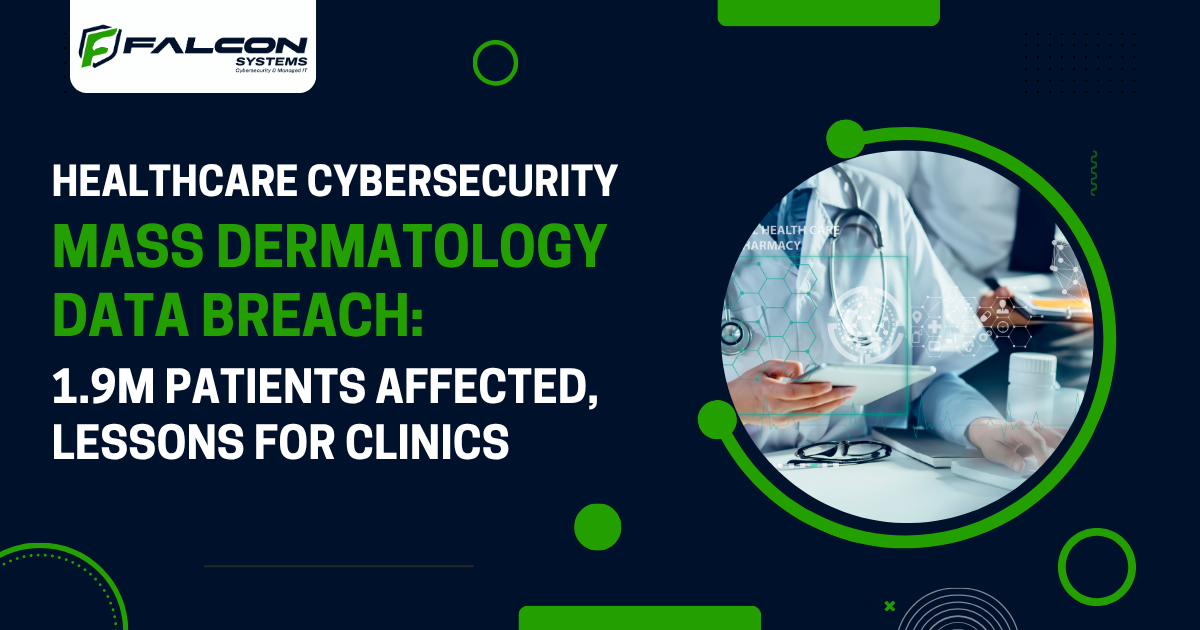In one of the largest healthcare cybersecurity events of 2025, Anne Arundel Dermatology confirmed a massive data breach affecting over 1.9 million patients across multiple states. The incident has renewed urgent discussions about how clinics protect patient data, how quickly they respond to cyber threats, and what lessons can be learned for both U.S. and Canadian healthcare organizations.
The breach was first detected in mid-May 2024 when Anne Arundel Dermatology, a multi-state dermatology provider, identified suspicious network activity. The internal team responded immediately, securing systems and launching an investigation. Later findings revealed that unauthorized access began in February 2025, meaning hackers had been inside the system for weeks before detection.
The compromised files contained names, birth dates, addresses, insurance details, and medical information. Although investigators could not confirm whether data was exfiltrated, the organization chose transparency, notifying all potentially affected patients. Each received notice and 24 months of complimentary credit monitoring and identity protection services.
This event has drawn comparisons to ongoing cases of patient data breach in Canada, where healthcare providers have faced similar challenges in safeguarding medical and insurance data. While Canada operates under privacy laws such as PIPEDA and PHIPA rather than HIPAA, experts emphasize that HIPAA-like compliance standards are equally vital to ensure trust and security in both regions.
State Attorneys General and the U.S. Department of Health and Human Services’ Office for Civil Rights (OCR) were promptly notified. The OCR breach portal later confirmed the number of affected patients at 1,905,000, ranking this incident among the most severe breaches reported this year.
A Second Breach Highlights Sector-Wide Risks

Around the same time, Mountain Laurel Dermatology in North Carolina disclosed its own data breach, though on a smaller scale. The clinic detected unusual activity in an external cloud system on May 12, 2025, and brought in cybersecurity experts. Their investigation found possible unauthorized access to files containing billing data, diagnostic information, and Social Security numbers. Fortunately, its electronic medical record system was not compromised.
While only 3,300 individuals were impacted, the proximity of the two breaches underscores how widespread vulnerabilities have become in healthcare networks. As more clinics transition to cloud-based systems, the risk of patient data breach in Canada and the U.S. continues to grow, prompting urgent reviews of data governance and response protocols.
Cybersecurity professionals warn that many smaller healthcare providers still lack a formal clinic breach response plan. Without such a plan, teams often lose valuable time after an attack, allowing further data exposure. A structured clinic breach response plan typically includes containment actions, patient notification procedures, and regulator communication steps to mitigate legal and reputational damage.
The medical records breach steps taken by Anne Arundel Dermatology, isolating systems, launching forensic reviews, notifying patients, and offering protection services, are seen as model practices under both HIPAA and HIPAA-like compliance frameworks. Yet experts say every clinic should rehearse its own plan regularly to ensure readiness.
Beyond containment, recovery requires continuous improvement. The medical records breach steps should always include a post-incident review, vulnerability scanning, and staff cybersecurity training. Prevention, experts emphasize, is not a one-time action but an ongoing process that must evolve with emerging threats.
In both Canada and the U.S., telemedicine and cross-border data sharing have made security more complex. Even a patient data breach in Canada could stem from a U.S.-based cloud vendor or third-party processor, making international collaboration on privacy laws increasingly important.
Healthcare regulators have urged providers to align with HIPAA-like compliance standards and adopt best practices that go beyond minimum legal requirements. This includes implementing multifactor authentication, encryption, and real-time monitoring to prevent unauthorized access.
What Clinics Should Do Now
The Anne Arundel Dermatology breach has become a powerful reminder that cybersecurity is no longer just a technical issue; it’s a patient care issue. Clinics everywhere should treat this as a wake-up call.
If your healthcare organization stores or transmits patient information, now is the time to review your clinic breach response plan and educate your staff about essential medical records breach steps. This includes regular data backups, breach simulations, and immediate reporting of suspicious activity.
A proactive strategy is the best defense. Whether under HIPAA in the U.S. or through HIPAA-like compliance models in Canada, every clinic must commit to continuous improvement, employee awareness, and transparency.
In a digital age where cyber threats evolve daily, protecting patient information is not just about avoiding fines; it’s about safeguarding trust. The rising reports of patient data breaches in Canada and across borders remind us that cybersecurity is now a cornerstone of quality healthcare.
Protect Your Clinic with Falcon Systems!

Don’t wait for a breach to expose your clinic. Falcon Systems delivers AI-powered cybersecurity, compliance support, and fast incident response to keep patient data safe.
👉 Secure your clinic today. Talk to Falcon Systems now.

